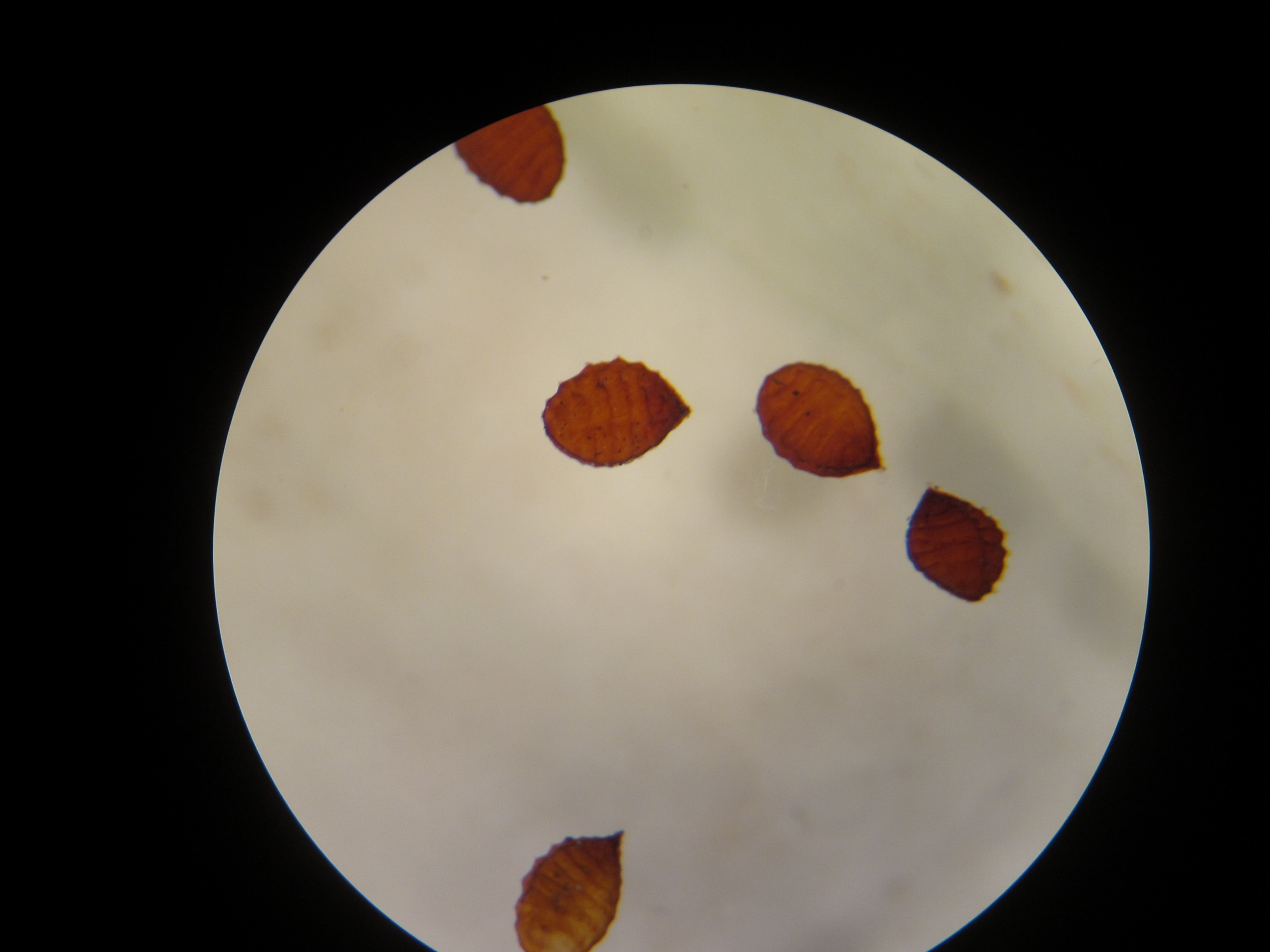Even when not an insect, if an object is small and mysterious, it will often be called a “bug” and end up on the desk of an entomologist. Such was the case with a specimens I received last week. They were described by a pest management professional as “tiny bugs” that appeared on the south side of a customer’s house every year. No mulch or trees or shrubs were reported nearby.

These tiny seeds of the Oxalis plant sometimes adhere to man-made surfaces, or other plants, and confused with “bugs”.
I thought at first that these tiny (1.3 mm length) objects might be spores from the artillery fungus, in the genus Sphaerobolus. Artillery, or shotgun, fungus is a type of primitive plant that grows as saprophytes on wood mulch. It has tiny black spores that it can shoot for several yards. The spores are sticky and adhere to a variety of surfaces, like walls of homes, sometimes leaving a stain when removed. But, according to the submitter there was no mulch nearby, and according to my plant pathologist friend, Dr. Kevin Ong, the specimen I was looking at under my microscope was not round as typical for Sphaerobolus, .
My sample of 20 or so objects were teardrop-shaped and ridged. Fortunately I network with many experienced entomologists several of whom kindly informed me that the sample was the seed of Oxalis, a common garden weed or plant.
One entomologist noted that he once got a series of calls from a commercial greenhouse grower who was doing his best to “kill” these “pests” “crawling” all over his greenhouse, but with little success. This is another example of why it is so important to identify the pest before reaching for the garden sprayer.
Oxalis seeds, it turns out, are pretty cool. They are borne by the plant in a cylindrical pod. When mature, or when the rip seed pod is touched, it shoots out the small seeds three to five feet. The rough coats on the seeds helps them stick to some surfaces (like a hardy-board exterior wall, in this case). For a good video showing how Oxalis seed dispersal works, check this out. The plants themselves are attractive, if sometimes difficult to eradicate from your yard. The plant leaves are sour-tasting because of the presence of oxalic acid; but in small quantities are good in salads.
So let’s not always blame insects for strange occurrences. There are enough real insects in the world to keep us entomologists busy full-time.